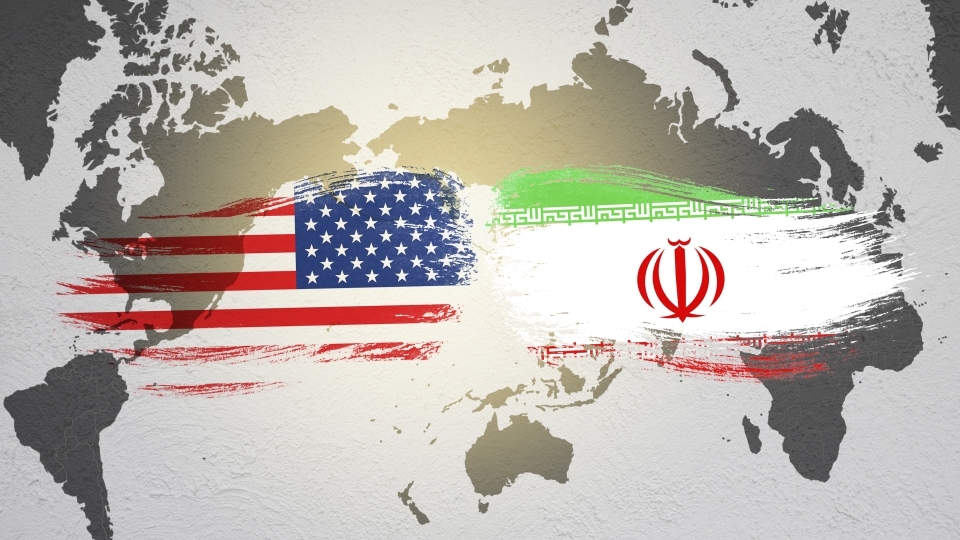Q&A: A New Administration, a Different Approach to U.S.-Iran Relations
January 25, 2021
- Author
- Jay Pfeifer

Almost exactly one year ago, the United States and Iran were on the verge of war.
After an American drone strike killed Qassim Soleimani, one of Iran’s most senior military leaders, Iran retaliated with missile attacks on U.S. bases in Iraq. However, what threatened to become an all-out war fizzled.
And now, with the Biden administration promising a different approach to the Middle East from the previous administration, Iran will be a top priority—and one of the biggest challenges—for the new State Department.
Silvi Toska, an associate professor of political science, studies Middle Eastern politics and gave us a quick rundown on the challenges facing both countries at this crucial inflection point.
What do U.S.-Iran relations look like right now?
Ever since the Iranian revolution of 1979, the relationship between the two countries has been quite difficult, to say the least. The more recent wars in Afghanistan and Iraq, and President Bush bracketing Iran as one of the “axis of evil,” made Iran ever more distrustful of the United States.
At the start of the Iraq war in 2003, the CIA received credible information that Iran had been secretly conducting nuclear activities in its civilian nuclear facilities, including modifying some of its missiles to carry nuclear warheads. Given regional volatility, there was a great—and justified—fear that Arab countries would also try to develop nuclear weapons to balance those of Iran.
To stop the possibility of regional proliferation, in 2006, the United States, China, Russia, the United Kingdom, France and Germany joined together to form the P5+1 in order to negotiate with Iran with regard to its nuclear program.
Those negotiations resulted in one of President Obama’s greatest achievements in the region, the Joint Comprehensive Plan of Action, or JCPOA, in July 2015. According to the deal, Iran agreed to limit enrichment and accept stronger monitoring in exchange for relief from sanctions.
Iran did stick to the terms of the JCPOA, but it is important to note that it also took advantage of power vacuums in the region to interject more aggressively. Iran entered Syria and became even more active in Iraq, with little action from the United States. This, to the United States’ Arab allies, especially Saudi Arabia, and Israel seemed to show that America was willing to turn a blind eye to Iran’s actions in the region, in exchange for JCPOA.
In contrast to President Obama, President Trump shared our allies’—the Saudis and Israelis— worldview, including their contempt for the Iran deal. As a result, in 2018, the United States officially withdrew from the JCPOA. Iran began to slowly disregard the provisions, once the rest of the member states could not effectively counter U.S. sanctions.
What were the consequences of our withdrawal from the JCPOA?
The consequences of the withdrawal are enormous, not just for the deal itself, but also for American credibility in the region.
Shortly after President Trump withdrew from the deal, Supreme Leader Ayatollah Ali Khamenei pledged Iran would not tolerate “the simultaneous restrictions of its economy and its nuclear program.” Indeed, while President Trump was firm on Iran and quick to reinstitute sanctions and establish a policy of “maximum pressure” that would supposedly bring Iran to its knees, there is no evidence that any of that has happened. Iran has only become bolder and has started producing weapons-grade enriched uranium, while the Trump administration’s actions did not always match its rhetoric.
For example, when Iran launched a missile attack on Saudi Arabia’s Abqaiq oil refinery in September 2019, President Trump did not respond. This was an act that shocked the region, as well as shut down nearly five percent of global oil production. Saudi Arabia, the UAE, and Israel realized that Trump’s aggressive approach to Iran did not include a willingness to go to war. In other words, President Trump’s policy was a combination of military activism, tough language on Iran, but also diplomatic passivity which, in turn, and as we will see below, has given regional partners a blank check for destabilizing behavior that keeps the region on the brink of conflict.
About a year ago, the United States and Iran appeared to be very close to armed conflict. What happened?
In January 2020, the United States assassinated Qassim Soleimani, the leader of the powerful Quds Force of the Islamic Revolutionary Guards Corps, for his activities in the region and plans to attack U.S. troops in Iraq. The ensuing Iranian strike on the Ayn Al-Asad military base in Iraq led to nearly 100 injured U.S. troops, but it was in many ways a more measured response than was feared. Neither of the two countries wanted an outright confrontation but, as expected, Iranian proxies in Iraq have been threatening American troops ever since.
Withdrawing from the JCPOA and essentially breaking all diplomatic ties to Iran has been an overall disaster for all involved. With the United States unwilling to have a greater military role in the region, and Iran so emboldened, none of the U.S. goals were achieved—Iran is in a better position to develop nuclear weapons now than under the JCPOA, and it has only become more involved in regional conflicts. Just as importantly, when former Secretary of State Mike Pompeo suggested that he would close the U.S. embassy in Iraq in response to Iranian activism in the country, it could hardly be seen as a greater success for Iran, which wants nothing more than the removal of U.S. troops from the region, but especially from Iraq.
And how do you think the Biden administration will proceed? Will Iran be interested in restoring/resuming the agreement?
Restoring trust in U.S. negotiations is going to be the most important issue for the Biden administration. Biden has made it clear that he would rejoin the agreement and use a renewed commitment to diplomacy to work with allies to strengthen and extend it, while pressuring Iran against its regional activities.
The pandemic has hit Iran very hard, but in combination with a new U.S. administration, it may just lead to an opportunity for such a negotiation. Removing sanctions and even providing medical aid may help bring Iran to the table. To be sure, no significant group in Iran is enthusiastic about potential U.S. aid, and distrust of the United States is indeed high, which means that the United States needs to be very clear about its priorities, and realistic about what it can achieve with Iran. A clear U.S. policy in the region—which has been lacking for decades—and a plan to pursue that policy are necessary steps that may help correct some of the mistakes of the past. Iran has elections in June 2021 and, depending how the situation with its domestic economy and pandemic response evolves in the next few months, it may also provide yet another opportunity for opening negotiations.
In other words, restoring the JCPOA or something like it will very much depend on both domestic Iranian politics, and a clear and actionable U.S. foreign policy in the region—a central focus of which ought to be a reconsideration of our very own allies in the region. The language of “good” versus “evil” that has long been an assumption of U.S. alliances must simply be replaced: many of the actors are pursuing the same goals of regional power with the same dirty means. While guaranteeing the integrity and security of both Israel and Saudi Arabia, as well as smaller Gulf States, from Iran, the United States also needs to reign in its allies.



